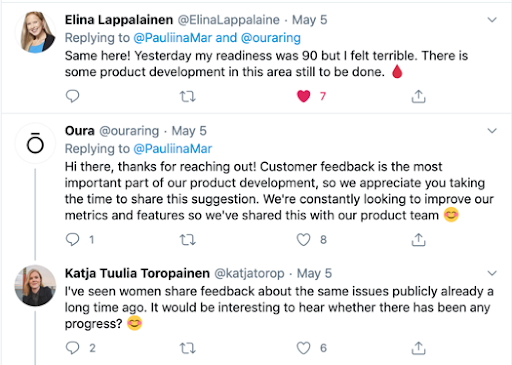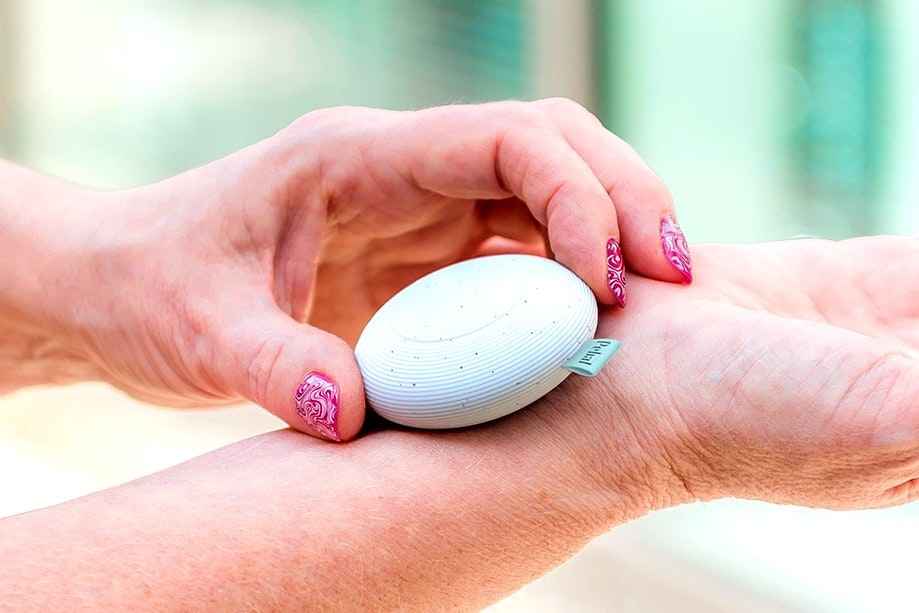It's that time of month again and my favourite wearable is showing all-time high ‘readiness’. Apparently, I'm supposed to feel ready to conquer the world, while in reality I’m experiencing cramps and fatigue — and rest assured, it’s not the first time this has happened. The app’s ill-fitting diagnosis feels like sarcasm and makes me want to hurl my phone at the wall. After a few deep breaths, I go for the next best option and tweet instead: “Dear Twitter, am I the only one?”.

Judging by the flood of feedback (pun intended), it’s obvious I’m not alone with my frustration. Why do products still target everyone, but show little or no awareness for half the population — let alone underrepresented groups?
It’s time companies took heed: if you choose a brand strategy where you address everyone, make sure your product team gets the memo, too.
If you’re not ready for “tech for all” opt for mentech instead
So this is what happens: companies like Oura brand themselves as everyone’s personal wellness advisors, while forgetting half their target group in product development. It doesn’t make sense to me — we have femtech for women’s health products, so why don’t we see more companies position themselves as mentech instead? Why are women a feature while men are the default?
We know that in the history of medicine women have often been left out of medical trials and, as a result, many treatments are less effective for women. I’m disappointed to see this trend continue in healthtech, where biased data sets train algorithms and products are introduced in non-transparent ways. And don’t get me wrong, Oura is by no means the only culprit — Apple Health is probably the most famous example of a product marketed for everyone that kept forgetting about periods. Later Fitbit tried to introduce a period tracking feature but fell short, too.
Why are women a feature while men are the default?
I realise it’s not a quick fix — the menstrual cycle is by no means simple maths, but I can’t imagine it being out of reach of modern healthtech companies. Given the technological advances since the early 20th century when the menstrual cycle was considered too complex to model, I cannot find too many technical reasons for the lack of progress today.
That being said, not every company has to crack this equation. It is perfectly fine for companies to ignore some consumer profiles in fact, from a customer acquisition point of view, the more targeted the better. However, what is not fine is misleading consumers into thinking that the product is for everyone. Why should women pay the same price — in some cases a very premium price, I might add — for a product that does not work for them?
Product roadmap is key: think core, not feature
Fitbit and Google Glass were criticised when they brought in celebrity designers to make their products more appealing to women, assuming a shiny cover would be enough. Imagine if a femtech like Bellabeat introduced a camo-print exterior to their wellness jewellery, but the core product stayed the same. Would men buy it? I have my doubts.
Imagine if a femtech like BellaBeat introduced a camo-print exterior to their wellness jewellery, but the core product stayed the same.
I’ve said it before, but I’ll spell it out again: women are not a feature or a facelift, nor are any other customer groups.
Investors are of course accustomed to drilling founders about who the business idea serves and expect this answer to show on the product roadmap. From my experience, this is on every startup’s agenda and comes up in board meetings all the time. I can only imagine two reasons for the inconsistencies between brand and roadmap — investors, founders and the board 1) don’t realise the issue or 2) don’t prioritise it. (The third is flat out ignoring the problem, but let’s not go there now.)

I spoke to a female software engineer about how her product team prioritises work:
“It matters who’s pushing the feature, and I feel it’s tough to push for one that has to do with diversity. In a homogenous team it may be hard to empathise with customers different from you. And prioritising work is a flywheel: you work in sprints and lose the ability to question choices as you’re focused on pushing the next feature to the market. Maybe investors could bring a third perspective to the table.”
As an investor, I echo her call. When entrepreneurs get caught up in the flywheel, us investors have a responsibility to question and help make tough calls on prioritisation — whether this involves discussions on budgets, new markets or hormonal systems.
As for my favourite wearable? I’m optimistic that Oura can crack the menstrual code.
Pauliina Martikainen is the investment director of Finnish venture capital firm Maki.vc.


